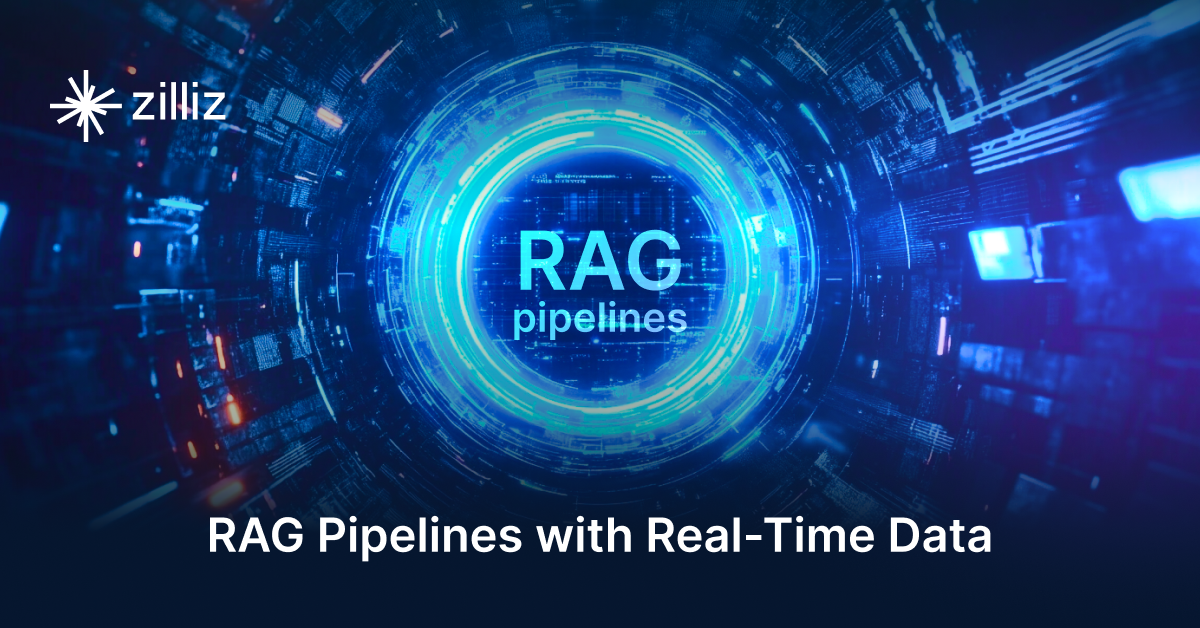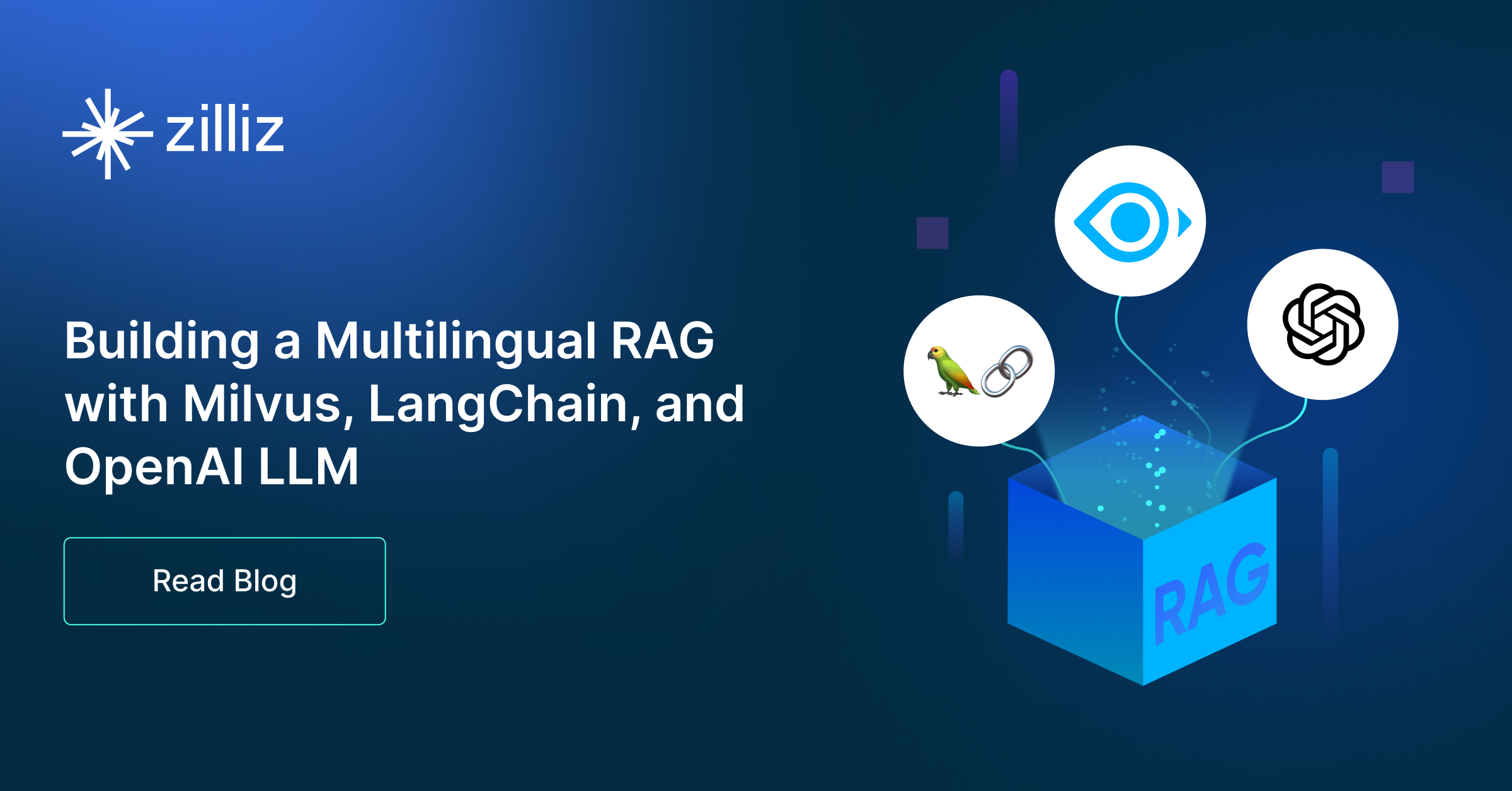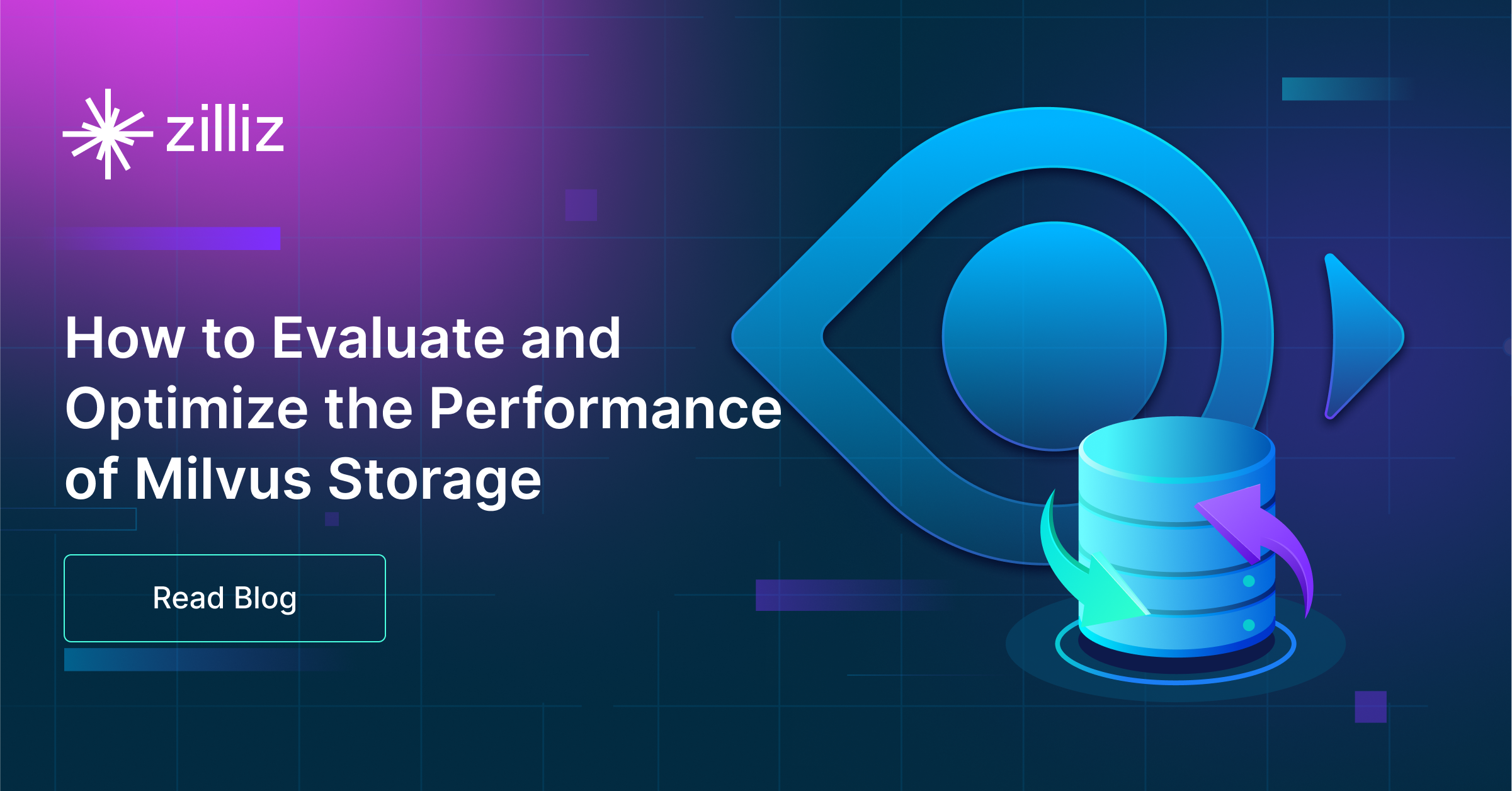Build RAG Chatbot with LangChain, OpenSearch, NVIDIA BGE-M3, and Ollama paraphrase-multilingual
Introduction to RAG
Retrieval-Augmented Generation (RAG) is a game-changer for GenAI applications, especially in conversational AI. It combines the power of pre-trained large language models (LLMs) like OpenAI’s GPT with external knowledge sources stored in vector databases such as Milvus and Zilliz Cloud, allowing for more accurate, contextually relevant, and up-to-date response generation. A RAG pipeline usually consists of four basic components: a vector database, an embedding model, an LLM, and a framework.
Key Components We'll Use for This RAG Chatbot
This tutorial shows you how to build a simple RAG chatbot in Python using the following components:
- LangChain: An open-source framework that helps you orchestrate the interaction between LLMs, vector stores, embedding models, etc, making it easier to integrate a RAG pipeline.
- OpenSearch: An open-source search and analytics suite derived from Elasticsearch. It offers robust full-text search and real-time analytics, with vector search available as an add-on for similarity-based queries, extending its capabilities to handle high-dimensional data. Since it is just a vector search add-on rather than a purpose-built vector database, it lacks scalability and availability and many other advanced features required by enterprise-level applications. Therefore, if you prefer a much more scalable solution or hate to manage your own infrastructure, we recommend using Zilliz Cloud, which is a fully managed vector database service built on the open-source Milvus and offers a free tier supporting up to 1 million vectors.)
- NVIDIA BGE-M3: The NVIDIA BGE-M3 is a state-of-the-art language model designed to generate human-like text, making it suitable for a variety of natural language processing tasks. Its strength lies in its ability to produce coherent and contextually relevant responses, making it ideal for applications in chatbots, content creation, and virtual assistants. BGE-M3 excels in understanding nuanced input, providing users with highly accurate and engaging interactions, thereby enhancing automated communication systems across multiple industries.
- Ollama Paraphrase-Multilingual: This AI model specializes in generating paraphrases across multiple languages, enhancing content diversity and accessibility. Its strength lies in understanding context while altering sentence structure, making it ideal for translation services, content creation, and multilingual learning applications.
By the end of this tutorial, you’ll have a functional chatbot capable of answering questions based on a custom knowledge base.
Note: Since we may use proprietary models in our tutorials, make sure you have the required API key beforehand.
Step 1: Install and Set Up LangChain
%pip install --quiet --upgrade langchain-text-splitters langchain-community langgraph
Step 2: Install and Set Up NVIDIA BGE-M3
pip install -qU "langchain-nvidia-ai-endpoints"
import getpass
import os
if not os.environ.get("NVIDIA_API_KEY"):
os.environ["NVIDIA_API_KEY"] = getpass.getpass("Enter API key for NVIDIA: ")
from langchain.chat_models import init_chat_model
llm = init_chat_model("baai/bge-m3", model_provider="nvidia")
Step 3: Install and Set Up Ollama paraphrase-multilingual
pip install -qU langchain-ollama
from langchain_ollama import OllamaEmbeddings
embeddings = OllamaEmbeddings(model="paraphrase-multilingual")
Step 4: Install and Set Up OpenSearch
pip install --upgrade --quiet opensearch-py langchain-community
from langchain_community.vectorstores import OpenSearchVectorSearch
opensearch_vector_search = OpenSearchVectorSearch(
"http://localhost:9200",
"embeddings",
embedding_function
)
Step 5: Build a RAG Chatbot
Now that you’ve set up all components, let’s start to build a simple chatbot. We’ll use the Milvus introduction doc as a private knowledge base. You can replace it with your own dataset to customize your RAG chatbot.
import bs4
from langchain import hub
from langchain_community.document_loaders import WebBaseLoader
from langchain_core.documents import Document
from langchain_text_splitters import RecursiveCharacterTextSplitter
from langgraph.graph import START, StateGraph
from typing_extensions import List, TypedDict
# Load and chunk contents of the blog
loader = WebBaseLoader(
web_paths=("https://milvus.io/docs/overview.md",),
bs_kwargs=dict(
parse_only=bs4.SoupStrainer(
class_=("doc-style doc-post-content")
)
),
)
docs = loader.load()
text_splitter = RecursiveCharacterTextSplitter(chunk_size=1000, chunk_overlap=200)
all_splits = text_splitter.split_documents(docs)
# Index chunks
_ = vector_store.add_documents(documents=all_splits)
# Define prompt for question-answering
prompt = hub.pull("rlm/rag-prompt")
# Define state for application
class State(TypedDict):
question: str
context: List[Document]
answer: str
# Define application steps
def retrieve(state: State):
retrieved_docs = vector_store.similarity_search(state["question"])
return {"context": retrieved_docs}
def generate(state: State):
docs_content = "\n\n".join(doc.page_content for doc in state["context"])
messages = prompt.invoke({"question": state["question"], "context": docs_content})
response = llm.invoke(messages)
return {"answer": response.content}
# Compile application and test
graph_builder = StateGraph(State).add_sequence([retrieve, generate])
graph_builder.add_edge(START, "retrieve")
graph = graph_builder.compile()
Test the Chatbot
Yeah! You've built your own chatbot. Let's ask the chatbot a question.
response = graph.invoke({"question": "What data types does Milvus support?"})
print(response["answer"])
Example Output
Milvus supports various data types including sparse vectors, binary vectors, JSON, and arrays. Additionally, it handles common numerical and character types, making it versatile for different data modeling needs. This allows users to manage unstructured or multi-modal data efficiently.
Optimization Tips
As you build your RAG system, optimization is key to ensuring peak performance and efficiency. While setting up the components is an essential first step, fine-tuning each one will help you create a solution that works even better and scales seamlessly. In this section, we’ll share some practical tips for optimizing all these components, giving you the edge to build smarter, faster, and more responsive RAG applications.
LangChain optimization tips
To optimize LangChain, focus on minimizing redundant operations in your workflow by structuring your chains and agents efficiently. Use caching to avoid repeated computations, speeding up your system, and experiment with modular design to ensure that components like models or databases can be easily swapped out. This will provide both flexibility and efficiency, allowing you to quickly scale your system without unnecessary delays or complications.
OpenSearch optimization tips
To optimize OpenSearch in a Retrieval-Augmented Generation (RAG) setup, fine-tune indexing by enabling efficient mappings and reducing unnecessary stored fields. Use HNSW for vector search to speed up similarity queries while balancing recall and latency with appropriate ef_search and ef_construction values. Leverage shard and replica settings to distribute load effectively, and enable caching for frequent queries. Optimize text-based retrieval with BM25 tuning and custom analyzers for better relevance. Regularly monitor cluster health, index size, and query performance using OpenSearch Dashboards and adjust configurations accordingly.
NVIDIA BGE-M3 optimization tips
To optimize the NVIDIA BGE-M3 in a Retrieval-Augmented Generation (RAG) setup, ensure that your data retrieval system is finely tuned for reusability and relevance—consider implementing a caching mechanism to store frequently accessed documents. Additionally, experimenting with the retrieval parameters, such as k-value in nearest neighbor searches, can yield better results for your specific tasks. Utilize mixed-precision training to enhance throughput and reduce memory usage without compromising model performance. Regularly monitor and fine-tune hyperparameters through validation tests to achieve the best balance between speed and accuracy. Lastly, leverage NVIDIA's TensorRT or ONNX optimization tools for model deployment to maximize inference efficiency.
Ollama Paraphrase-Multilingual Optimization Tips
To optimize the Ollama paraphrase-multilingual component in your Retrieval-Augmented Generation (RAG) setup, ensure that your training dataset is diverse and representative of the languages and dialects you intend to support, as this enhances paraphrasing accuracy across contexts. Use transfer learning with domain-specific data to improve performance on niche topics. Adjust hyperparameters such as learning rate and batch size based on validation results to enhance convergence. Implement a caching mechanism for frequently accessed paraphrases to reduce response time during retrieval. Monitor and analyze performance metrics regularly to identify bottlenecks, and consider fine-tuning the model periodically based on user feedback and new datasets to adapt to evolving language use.
By implementing these tips across your components, you'll be able to enhance the performance and functionality of your RAG system, ensuring it’s optimized for both speed and accuracy. Keep testing, iterating, and refining your setup to stay ahead in the ever-evolving world of AI development.
RAG Cost Calculator: A Free Tool to Calculate Your Cost in Seconds
Estimating the cost of a Retrieval-Augmented Generation (RAG) pipeline involves analyzing expenses across vector storage, compute resources, and API usage. Key cost drivers include vector database queries, embedding generation, and LLM inference.
RAG Cost Calculator is a free tool that quickly estimates the cost of building a RAG pipeline, including chunking, embedding, vector storage/search, and LLM generation. It also helps you identify cost-saving opportunities and achieve up to 10x cost reduction on vector databases with the serverless option.
 Calculate your RAG cost
Calculate your RAG cost
What Have You Learned?
By diving into this tutorial, you’ve unlocked the magic of building a powerful RAG pipeline from scratch! You discovered how LangChain acts as the glue, seamlessly connecting your components and orchestrating the flow of data. With OpenSearch as your vector database, you learned to store and retrieve embeddings efficiently, leveraging its scalability and speed to handle complex queries. The NVIDIA BGE-M3 embedding model became your secret weapon for generating rich, context-aware vector representations, ensuring your system understands nuances in text. And with Ollama’s paraphrase-multilingual model, you saw firsthand how to generate human-like responses that feel natural and adaptable across languages—a game-changer for global applications. Along the way, you picked up pro tips like optimizing chunking strategies for better retrieval and using metadata filtering in OpenSearch to fine-tune results. Even better, you explored tools like the free RAG cost calculator to estimate expenses and make informed decisions as you scale.
Now, armed with this knowledge, you’re ready to create RAG systems that aren’t just functional but exceptional. Imagine the possibilities: chatbots that converse fluently in multiple languages, search engines that grasp intent, or AI assistants that pull insights from massive datasets. The tools are in your hands, and the journey is just beginning. So go ahead—tweak those parameters, experiment with new models, and push the boundaries of what RAG can do. Your next breakthrough is a few lines of code away. Build boldly, optimize fearlessly, and let your creativity shape the future of intelligent applications. The world needs your ideas—start bringing them to life today!
Further Resources
🌟 In addition to this RAG tutorial, unleash your full potential with these incredible resources to level up your RAG skills.
- How to Build a Multimodal RAG | Documentation
- How to Enhance the Performance of Your RAG Pipeline
- Graph RAG with Milvus | Documentation
- How to Evaluate RAG Applications - Zilliz Learn
- Generative AI Resource Hub | Zilliz
We'd Love to Hear What You Think!
We’d love to hear your thoughts! 🌟 Leave your questions or comments below or join our vibrant Milvus Discord community to share your experiences, ask questions, or connect with thousands of AI enthusiasts. Your journey matters to us!
If you like this tutorial, show your support by giving our Milvus GitHub repo a star ⭐—it means the world to us and inspires us to keep creating! 💖
- Introduction to RAG
- Key Components We'll Use for This RAG Chatbot
- Step 1: Install and Set Up LangChain
- Step 2: Install and Set Up NVIDIA BGE-M3
- Step 3: Install and Set Up Ollama paraphrase-multilingual
- Step 4: Install and Set Up OpenSearch
- Step 5: Build a RAG Chatbot
- Optimization Tips
- RAG Cost Calculator: A Free Tool to Calculate Your Cost in Seconds
- What Have You Learned?
- Further Resources
- We'd Love to Hear What You Think!
Content
Vector Database at Scale
Zilliz Cloud is a fully-managed vector database built for scale, perfect for your RAG apps.
Try Zilliz Cloud for Free


